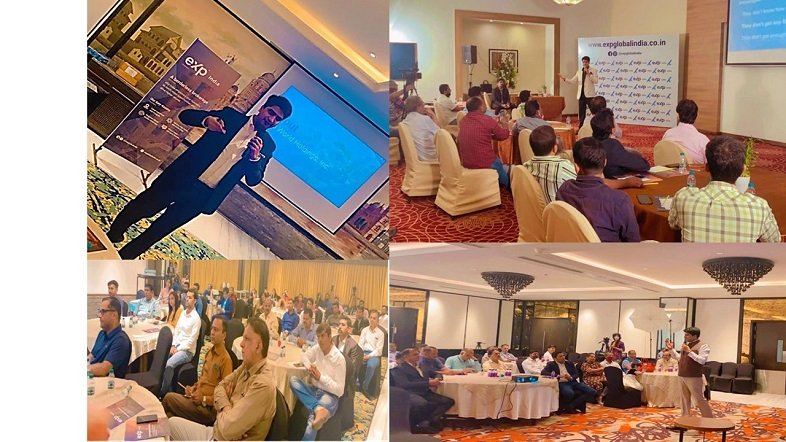India’s Grade A office market is likely to touch 1.2 billion sq ft by 2030; valued at USD 165 billion at current pricing: JLL
Mumbai, 28 April 2021: The office segment in India has been one of the fastest to recover from the impact of the pandemic. The recovery has been so phenomenal that India’s Grade A office market across the top seven cities is poised to grow to over 1 billion sq ft in size by 2026, said a JLL paper titled ‘Reimagining, Reinventing and Redefining Real Estate 2030’released today at the National Real Estate Development Council (NAREDCO), Maharashtra’s flagship event, The Real Estate Forum 2022whereJLL associated as a Knowledge Partner.
In the post-Covid world, the flex space segment is expected to grow and be a mainstream occupier segment with operator-landlord partnerships creating superior office assets. As a result of the evolution to a more distributed work model, occupiers will look at strategies to not only make their portfolio more agile but also tap into the talent pool from emerging urban centers. The flexible space segment will play a key role in supporting occupiers’ growth strategies given the changing dynamics of portfolio optimization and employee needs. As such, the flex market is expected to double its footprint across the top seven cities by 2025 to ~75 million sq ft and cross the 100 million sq ft mark by 2030.
Karan Singh Sodi, Regional Managing Director, Mumbai & Ahmedabad, JLL said,
“Given the growth dynamics, India’s Grade A office market across the top seven cities is poised to grow to over 1billion sq. ft in size by 2026 and touch 1.2 billion sq ft by 2030. India will continue to remain the leader in technology outsourcing and will build on its gains as the biggest R&D and Global Capability Centre hub across financial services, software development, new technology, artificial intelligence and machine learning. Also, with the country’s renewed focus on making itself as a manufacturing hub, engineering and manufacturing firms will setup large R&D centers here, making its office market the most dynamic in the region. It has already proved itself as the global vaccine hub making it healthcare and life sciences R&D leader. India may potentially account for over2/3rds of all occupier activity in the Asia Pacific region.”
The office and the residential segments in India have seen a very smart and sustained recovery in the past few quarters. With investor confidence back, as witnessed by the rise in total institutional investments in the Indian real estate segment, we are well poised to grow exponentially in the next few years. What is most heartening to witness is the occupiers’ focus on sustainability and green solutions to help reduce the carbon footprint.
Mr. Sandeep Runwal, President, NAREDCO Maharashtra & MD, Runwal Developers, said, “One of the highlights of the post COVID world has been the recovery of the office segment and this segment is expected to grow to over 1 billion sq ft in size by 2026 across seven cities which includes Delhi, Mumbai, Pune, Chennai, Kolkata, Bangalore and Hyderabad. It’s an interesting development which we believe is an apt topic to focus on at the NAREDCO Maharashtra flagship event The Real Estate Forum 2022.”
Sustainability is the key to the future
India’s commercial Grade A office stock across the top seven cities has a 42% green-certification penetration. The penetration of green-certified buildings is likely to cross the 50% mark overall over the next decade. In fact, new supply is likely to be green rated to an extent of 70-75% even as older projects look to upgrade and reduce their carbon footprint. With occupiers driving the green agenda and willing to pay a premium for such green buildings, affirmative action on net zero carbon pledges by occupiers will push the commercial office segment towards setting aggressive sustainability and net-zero carbon targets.
India’s listed REITs would be one of the leading markets in the Asia Pacific
The market capitalisation of listed REITs which stood at USD 8 billion currently is expected to grow manifold with the specialized REITs market developing in the next few years. This will also lead to increased retail participation. Consolidation of rent yielding assets across segments Institutional investments in rent yielding assets across segments will increase leading to higher consolidation of assets. Portfolio deals will become prominent.
Urban logistics grows on the back of e-commerce
The rise of e-commerce and the ‘within-15-minutes delivery’ has been the powerful engine for the growth of the urban logistics and in-city logistics story. Multi-story warehouses would also act as the next step in logistics for effective utilization of land at the last mile delivery locations as well as peripheral logistics. On-demand warehousing offers flexibility and agility to direct-to-consumer sellers to avail of order fulfillment or warehousing services as and when required. With omnichannel focus, customers expect new alternatives such as buying online and pickup in-store or shipping from store.








